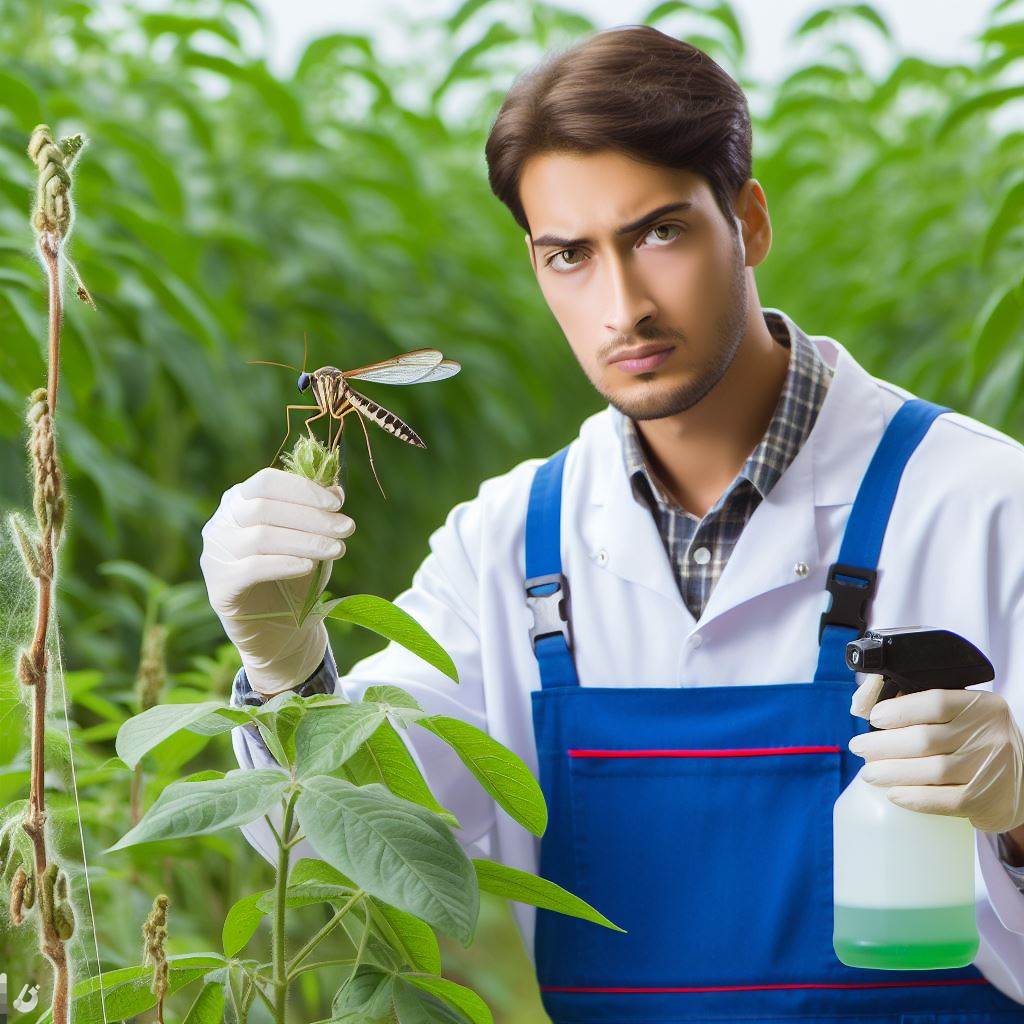Introduction
Permaculture is a holistic approach to sustainable living that mimics natural ecosystems.
Soil health is crucial in permaculture as it supports plant growth and overall ecosystem health.
This blog post will explore the importance of soil health in permaculture and its key principles.
Soil is the foundation of any permaculture design, providing essential nutrients for plant growth.
Healthy soil improves water retention and reduces erosion, creating a resilient ecosystem.
It enhances biodiversity, supporting beneficial microorganisms and promoting a balanced ecosystem.
Soil health also helps sequester carbon, mitigating climate change and reducing greenhouse gas emissions.
Principles for Improving Soil Health in Permaculture:
- Observe and interact closely with the land, understanding its unique characteristics and needs.
- Apply permaculture techniques like mulching, composting, and cover cropping to enrich the soil.
- Use organic and regenerative farming practices that minimize chemical inputs and maximize soil fertility.
- Implement rotational grazing and companion planting to enhance soil structure and nutrient cycling.
- Foster diversity by promoting a variety of plant species and adopting agroforestry techniques.
- Practice soil conservation methods such as contour plowing and terracing to prevent erosion.
- Embrace sustainable water management strategies to reduce soil degradation and optimize irrigation.
- Continuously monitor and evaluate soil health to make informed decisions for its improvement.
Soil health is essential in permaculture as it sustains plant growth, biodiversity, and ecosystem resilience.
By adopting permaculture principles, we can preserve and enhance soil health, creating a sustainable future.
Understanding Soil Health
Definition of soil health
Soil health refers to the overall condition and fertility of the soil for supporting plant growth.
Soil is the foundation of agriculture, and its health plays a fundamental role in determining the success of farming practices.
Understanding soil health is essential for sustainable agriculture, as it affects the productivity and long-term sustainability of agricultural systems.
In this section, we will explore the definition of soil health, factors influencing it, and its significance in sustainable agriculture.
Definition of soil health
Soil health can be defined as the overall condition and fertility of the soil, which determines its ability to support plant growth.
Transform Your Agribusiness
Unlock your farm's potential with expert advice tailored to your needs. Get actionable steps that drive real results.
Get StartedHealthy soil has a balanced physical, chemical, and biological composition necessary for sustaining plant life.
Factors influencing soil health
Organic matter content
Organic matter refers to decaying plant and animal materials present in the soil.
It plays a crucial role in maintaining soil structure, water retention, nutrient cycling, and microbial activity.
Adequate organic matter content is vital for soil health.
Soil structure and composition
The physical arrangement and composition of soil particles greatly influence its health.
An ideal soil structure should have a good balance of sand, silt, and clay particles.
This balance allows for proper water drainage, aeration, and root penetration.
Soil pH and nutrient availability
Soil pH is a measure of soil acidity or alkalinity. Different plants have different pH preferences for optimum growth.
Proper soil pH ensures the availability of essential nutrients to plants, as nutrient availability significantly depends on pH levels.
Overview of the role of soil health in sustainable agriculture
Soil health is a cornerstone of sustainable agriculture due to the following reasons:
Crop productivity
Healthy soil supports the growth and development of crops by providing necessary nutrients, water retention, and root penetration.
It contributes to increased crop yields and food production.
Erosion control
Soils with good structure and organic matter content are more resistant to erosion.
Healthy soil prevents the loss of topsoil and helps in maintaining soil fertility.
Water management
Healthy soils can hold and retain water, preventing water runoff and promoting its infiltration.
This helps in sustaining plant growth, especially during dry periods.
Carbon sequestration
Soil plays a significant role in carbon sequestration, capturing and storing atmospheric carbon dioxide.
Healthy soils with high organic matter content act as carbon sinks, contributing to mitigating climate change.
In short, understanding soil health is crucial for sustainable agriculture.
By focusing on maintaining organic matter content, improving soil structure, and ensuring optimal pH levels, farmers can promote soil health and enhance their agricultural practices.
Implementing sustainable soil management practices not only supports crop productivity but also preserves the ecosystem and contributes to global environmental goals.
Read: Cover Crop Mixes: Soil Health Multipliers
Permaculture Principles for Soil Health
In permaculture, maintaining soil health is a fundamental aspect that influences the overall success of a system.
By following specific principles, we can create the ideal conditions for robust and thriving soil.
Showcase Your Farming Business
Publish your professional farming services profile on our blog for a one-time fee of $200 and reach a dedicated audience of farmers and agribusiness owners.
Publish Your ProfileLet’s explore the permaculture principles for soil health in greater detail.
Mimicking natural systems
To improve soil health, it is essential to observe and understand natural ecosystems.
By closely studying natural environments, we can gain insights into their functioning and apply similar principles to our own systems.
Understanding ecological interconnections allows us to mimic the processes found in nature, promoting a balanced and sustainable soil ecosystem.
Regenerative practices for soil health
One key principle is to avoid or minimize tillage. Excessive tilling disrupts the delicate balance of microorganisms and beneficial insects in the soil.
Instead, we can implement mulching and cover cropping techniques.
Mulching helps retain moisture, suppress weeds, and nourish the soil as organic matter decomposes.
Cover cropping adds nutrients, prevents erosion, and enhances soil structure.
Composting and vermiculture, the process of using worms to break down organic waste, are also vital regenerative practices.
Both methods help create nutrient-rich soil amendments, improving overall soil fertility and health.
Maximizing biodiversity
Maximizing biodiversity within our systems is crucial for long-term soil health.
Companion planting involves strategically selecting plant combinations that benefit each other. Some plants repel pests, while others attract beneficial insects or fix nitrogen.
By diversifying plant species and fostering beneficial ecological relationships, we enhance soil health and resilience.
Crop rotation is another effective technique for maximizing biodiversity.
By alternating crops each season, we prevent the buildup of pests and diseases while optimizing nutrient absorption and reducing the need for synthetic fertilizers.
Integrating livestock and animals, such as chickens for pest control or goats for weed management, can also contribute to a healthier soil ecosystem.
Water conservation techniques
Water conservation plays a vital role in maintaining soil health.
Permaculture systems employ various techniques to optimize water usage and minimize waste.
Rainwater harvesting involves collecting and storing rainwater for later use in irrigation.
This practice reduces reliance on external water sources and ensures a consistent supply for plant growth.
Implementing swales and contouring helps manage water flow in the landscape.
These earthworks slow down water runoff, allowing it to infiltrate the soil and replenish underground water reserves.
Additionally, efficient irrigation methods, such as drip irrigation or micro-sprinklers, reduce water loss through evaporation and ensure water reaches the plant’s root zone.
In general, adopting permaculture principles for soil health requires mimicking natural systems, implementing regenerative practices, maximizing biodiversity, and employing water conservation techniques.
By prioritizing soil health, we create a sustainable and resilient system that benefits both the environment and our agricultural endeavors.
Read: Water Wisdom: Soil Moisture Management

Learn More: Biodynamic Farming: A Holistic Approach
Benefits of Prioritizing Soil Health in Permaculture
Improved soil fertility and nutrient availability
One of the significant advantages of focusing on soil health in permaculture is the improvement in soil fertility and nutrient availability.
By implementing various techniques such as composting, cover cropping, and crop rotation, the soil’s organic matter content increases.
This leads to better nutrient retention and availability for plants, resulting in healthier and more productive crops.
Enhanced water infiltration and retention
Another benefit of prioritizing soil health is the enhancement of water infiltration and retention.
Healthy soils have a better structure, allowing water to penetrate deep into the ground.
This reduces surface runoff and increases the water-holding capacity of the soil.
As a result, plants have access to a more consistent and adequate water supply, especially during dry periods.
Reduction in soil erosion and degradation
By practicing soil health-focused permaculture, the risk of soil erosion and degradation is significantly reduced.
Healthy soils with sufficient organic matter and proper structure are more resistant to erosion caused by wind or water.
Additionally, implementing techniques like contour plowing, terracing, and the use of vegetative cover can prevent soil erosion and promote long-term soil stability.
Increased microbial activity and beneficial organisms
Prioritizing soil health also leads to increased microbial activity and the presence of beneficial organisms.
Healthy soils provide a favorable environment for beneficial bacteria, fungi, earthworms, and other microorganisms to thrive.
These organisms play critical roles in nutrient cycling, organic matter decomposition, and disease suppression, which contribute to overall soil and plant health.
Showcase Your Farming Business
Publish your professional farming services profile on our blog for a one-time fee of $200 and reach a dedicated audience of farmers and agribusiness owners.
Publish Your ProfileEnhanced plant and crop resilience
Last but not least, focusing on soil health in permaculture enhances plant and crop resilience.
Healthy soils support vigorous root development, allowing plants to establish stronger root systems that can withstand environmental stresses such as drought, temperature fluctuations, and disease outbreaks.
This increased resilience leads to higher crop yields, greater resistance to pests, and overall sustainable food production.
By prioritizing soil health in permaculture, practitioners can reap numerous benefits such as improved soil fertility and nutrient availability, enhanced water infiltration and retention, reduction in soil erosion and degradation, increased microbial activity and beneficial organisms, and enhanced plant and crop resilience.
These benefits not only contribute to sustainable agriculture but also foster healthier ecosystems and promote biodiversity.
Therefore, it is crucial for permaculture practitioners to recognize the significance of soil health and implement appropriate practices to maintain and improve it.
Read: Soil Structure: Building Blocks of Fertility
Case Studies and Examples
Success stories of permaculture farms emphasizing soil health
- A small permaculture farm in Oregon increased its soil fertility by implementing organic farming practices.
- Permaculture techniques improved soil health on a farm in Australia, resulting in increased crop yields and biodiversity.
- A permaculture farm in New Zealand rejuvenated degraded soil through strategic planting and rotational grazing methods.
Examples of permaculture techniques implemented for soil health
- Implementing composting systems: One farm utilized composting to recycle organic waste and enrich the soil with nutrients.
- Utilizing agroforestry practices: By planting trees alongside crops, a permaculture farm in Brazil improved soil structure and moisture retention.
- Applying regenerative grazing methods: A farm in Montana restored soil health by rotating livestock to promote organic matter decomposition and nutrient cycling.
These case studies and examples showcase the successful implementation of permaculture principles for soil health.
By adopting these techniques, farmers have not only improved the quality of their soil but also witnessed positive impacts on their overall farm ecosystem.
Success stories of permaculture farms emphasizing soil health
One success story in the realm of permaculture and soil health comes from a small farm in Oregon.
By embracing organic farming practices such as cover cropping and no-till techniques, the farm managed to significantly increase the fertility of its soil.
This led to healthier plants, reduced pest and disease issues, and higher yields.
A similar success story can be found in Australia, where a permaculture farm implemented various techniques to improve soil health.
By employing practices such as companion planting and rotational grazing, the farm not only enhanced soil fertility but also created a diverse ecosystem.
This, in turn, attracted beneficial insects and wildlife, contributing to a more balanced and resilient farm system.
Another inspiring case study comes from New Zealand, where a permaculture farm embarked on soil regeneration efforts.
The farm had been affected by years of conventional farming practices, resulting in degraded and compacted soil.
Through strategic planting, rotational grazing, and the introduction of organic matter, the farm was able to rejuvenate the soil and witness a revival in biodiversity.
Examples of permaculture techniques implemented for soil health
Implementing composting systems
One effective permaculture technique for enhancing soil health is the implementation of composting systems.
By composting organic waste and incorporating it into the soil, farms can replenish nutrients, improve soil structure, and increase microbial activity.
This not only boosts plant growth but also reduces the need for synthetic fertilizers.
Utilizing agroforestry practices
Agroforestry involves integrating trees or woody perennial plants with crops or livestock systems.
This practice benefits soil health by improving its structure, preventing erosion, and enhancing water retention.
Trees provide nutrients, shade, and habitat for beneficial organisms, creating a more resilient and productive farm ecosystem.
Applying regenerative grazing methods
Regenerative grazing techniques involve the careful management of livestock to mimic natural grazing patterns.
By allowing animals to graze intensively on one area and then moving them to another, farmers promote organic matter decomposition, nutrient cycling, and soil rejuvenation.
This results in improved soil fertility, increased carbon sequestration, and enhanced pasture quality.
In summary, these case studies and examples illustrate the significant impact permaculture techniques can have on soil health.
By prioritizing soil regeneration and implementing practices such as composting, agroforestry, and regenerative grazing, farmers can create sustainable and thriving agricultural systems.
Read: Climate-Smart Soil: Adapting Farm Practices
Conclusion
Soil health is crucial for sustainable agriculture as it provides nutrients, retains water, and supports a diverse ecosystem.
By focusing on soil health, we can create thriving gardens and farms that are resilient to pests and diseases.
Let’s take a stand for the well-being of our planet by adopting permaculture principles and nurturing our soil.
Together, we can build a sustainable future for generations to come.




